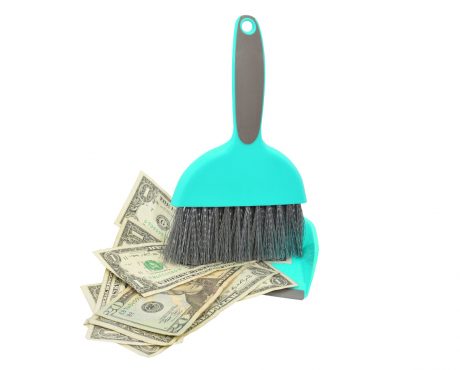Why Procter & Gamble Is a Dividend Stock Worth Owning Forever
Today’s top pick highlights a well-known name to income investors: Procter & Gamble Co (NYSE:PG) stock.
It takes just one number to show why PG stock is special: 60.
That’s the number of consecutive years in which the company has raised its dividends. This puts Procter & Gamble in a very elite group of companies called “dividend kings.” To enter the group, a company has to have a minimum of 50 years of consecutive dividend hikes. Among the thousands of companies trading in U.S. stock exchanges, there are only 19 dividend kings.
What’s more is that Procter & Gamble been paying uninterrupted dividends for 126 years. In today’s world, earnings can be adjusted, but dividends are still cold, hard cash paid to shareholders. Coupled with the increase in the company’s share price over the years, long-term investors of PG stock have seen their investments skyrocket in value.
The chart below shows the percentage return of Procter & Gamble stock with all dividends reinvested. Basically, if an investor bought shares of PG stock 40 years ago, entered into a dividend reinvestment plan (DRIP), and held on to their shares till this day, they would have made a profit of 11,867.48%. That’s no misprint.
While past performance does not guarantee future results, I believe Procter & Gamble is still a dividend stock worth watching for 2017 and beyond. Here’s why.
Source: StockCharts.com
Entrenched Position in a Recession-Proof Industry
When it comes to income investing, dividend stability is one of the most important things. There are many industries that are cyclical in nature, meaning companies’ revenues are higher when the economy is booming and lower during economic downturns. The automotive, construction, and airlines industries are good examples of this. These industries have produced many dividend-paying companies, but when the next downturn hits, it is uncertain whether those companies can maintain their current dividend payments.
Procter and Gamble, on the other hand, is deeply entrenched in the consumer staples business, which is known for being recession-proof. People may not be buying as many new cars when the economic is slowing down, but they will still need laundry detergent, paper towels, and grooming products. With leading brands like “Tide,” “Bounty,” and “Gillette” in each of these categories, Procter & Gamble is well positioned to generate solid business, even during economic contractions.
And to be honest, we can tell this simply by looking at the dividend history of PG stock. The world economy had plenty of ups and downs over the last 60 years. Six decades of consecutive dividend increases show that the company is capable of providing recession-proof dividends to income investors.
It also helps that Procter & Gamble is well-diversified. Investors are well aware that they should not put all the eggs in one basket. The good news is, even though Procter & Gamble is just one stock, its portfolio is built around 10 product categories. We already know that the demand for most of these products are inelastic to how the overall economy is doing. With diversification, even if the performance in one product category is weak, it’s unlikely that it would affect the whole company’s financials too much.
Source: “Fiscal 2016 Highlights,” Procter & Gamble Co, last accessed May 25, 2017.
On top of that, the company also diversifies geographically. Thanks to its leading brand portfolio, P&G’s products have reached almost every corner on Earth. In the company’s fiscal year 2016, more than half of its net sales were generated outside of the U.S.
Returning Value to Shareholders
In today’s world, many companies are expanding as much as possible. But aggressive expansion plans are often costly and may affect those companies’ ability to reward shareholders today. Procter & Gamble, on the other hand, has never ignored shareholder return, despite its impressive growth over the decades.
Right now, the company is streamlining its operations. It recently sold 41 beauty brands to Coty Inc (NYSE:COTY). The transaction resulted in share reduction of PG stock of approximately $9.4 billion. Procter & Gamble is also buying back its shares directly, which would further reduce the number of shares outstanding.
On the dividend front, PG stock currently pays $0.6896 each quarter, translating to an annual yield of 3.18%.
Taking into account its dividends, direct share repurchase, and share reduction from divestiture, the company expects to return approximately $22.0 billion to shareholders in its fiscal year 2017. From fiscal 2016 to 2019, Procter & Gamble expects to return up to $70.0 billion to shareholders. (Source: “The Procter & Gamble Company at The Consumer Analyst Group of New York Conference,” Procter & Gamble Co, last accessed May 25, 2017.)
Bottom line: Procter & Gamble is not in the most exciting industry, but its bulletproof business model and generous shareholder returns make PG stock a must-watch for income investors.
